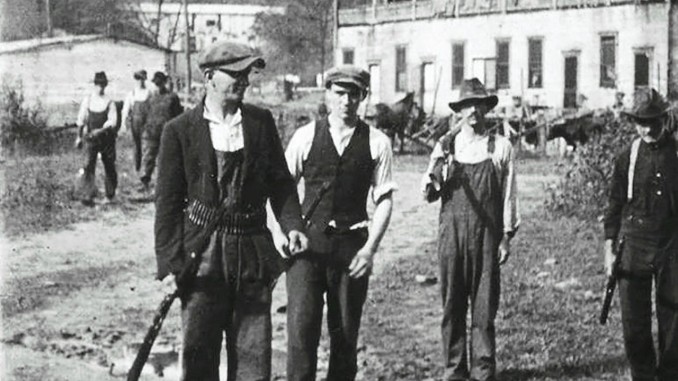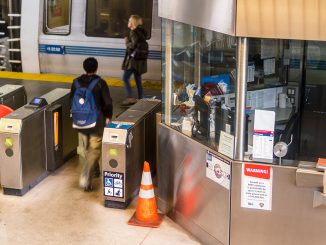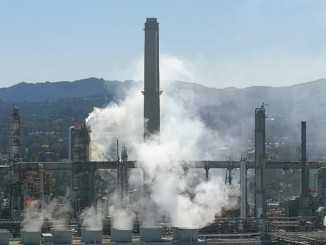
Labor Day is a holiday in the United States that supposedly celebrates the achievements and history of working people. Some politicians and union officials may give speeches celebrating the efforts of the nation’s working people. For those who have jobs right now, it may mean a day off to relax and try to forget about how crazy 2020 has been so far. Others will still work or volunteer to go in to get overtime.
There may not seem like a lot to celebrate right now. There are many challenges facing the working class in the U.S. and around the world. The health crisis created by the failure to respond to COVID-19 shows no sign of slowing down and will soon have killed 200,000 people in the U.S. and 900,000 in total around the world. Mass layoffs and threats of evictions will continue as a consequence of the economic crisis that the pandemic has helped accelerate. At the same time, inequality grows larger each day – symbolized by Jeff Bezos becoming the first person ever whose personal wealth was $200 billion.
We may not know it or be taught it in school, but the working class has a rich tradition of struggling against the challenges it has faced in each generation. Labor Day can serve to remind us that we should learn from our history as much as possible.
One struggle we can learn from was the struggle of coal miners that led to the “Battle of Blair Mountain” almost a 100 years ago in West Virginia. To help understand the heroic nature of their struggle, it’s important to understand what life was like in the coal fields of West Virginia in the late 1800s and early 1900s.
West Virginia was one of the coal mining capitals of the world at this time, as massive investments in coal production were made in this region after the Industrial Revolution. All aspects of life in West Virginia were run by coal barons. They owned all the mines, the land, and controlled the politicians who ran the state. They used the forces of the government and private armies to enforce the brutal exploitation of workers.
Because the mine owners owned most of the land near the mines, they had a monopoly in the region. If miners were going to work in the coalfields, they and their families were forced to live in company towns near the mines. Miners had to rent their houses, buy their food, and buy coal they had mined to heat their houses from the bosses who got rich from their back-breaking and dangerous work. In fact, bosses did not even pay miners with real money. They paid them in credits that could only be used to buy life’s necessities from the bosses’ stores.
Many ended the month with nothing left. Others needed to go into debt to the coal companies because payments for rent and food didn’t stop when the coal bosses reduced workers’ hours or closed the mines for a while. In addition to this, there were no safety measures in place. Many died in the mines in industrial accidents. Others died of “black lung” disease from inhaling coal dust all day. The disease was caused by coal particles building up in the lungs of miners. It slowly turned their lungs black and caused them to stop working over time. Because of this, for many, years of working in the mines was like dying a slow death.
Workers could be fired at any time, and when they were hired, they had to sign contracts saying they wouldn’t try to organize or unionize. Those that tried to organize were either fired, intimidated with violence, or killed.
Facing these conditions, miners began to struggle and organize themselves in mines across coal country. They organized militant strikes to improve their conditions, and some miners fought for the right to union representation and collective bargaining through the United Mine Workers Union, which was founded in 1890. Strikes and efforts to organize were often brutally repressed. West Virginia often saw periods of open class warfare, with several armed confrontations taking place between striking miners trying to improve their conditions on one side, and on the other, either private armies funded by the coal bosses, or forces of the state seeking to support the bosses. Because of this, the series of struggles that took place in the period between 1912-1921 are known as the “West Virginia Mine Wars.”
The 1921 Battle of Blair Mountain was the most dramatic and heroic of these struggles, and remains the largest armed uprising of the working class in U.S. history.
A combination of events led to this uprising. In the spring of 1920, private goons hired by the coal companies were sent in to break a strike of coal miners in Matewan, a town in the southwestern part of West Virginia. One of their tactics to break the strike was to forcibly evict miners and their families from their homes in the company towns, leaving them homeless. The local sheriff in Matewan at the time, Sid Hatfield, was supportive of the miner’s struggle and did not believe the private armies had any business evicting the miners. After confronting them, Hatfield and a group of miners got into a gun battle with the private goons, killing several of them.
This event boosted the spirits of miners, as it proved that people could stand up against the coal goons. In the aftermath of this event, coal bosses conspired with the state government to capture Hatfield and workers who participated in the gunfight and try them for murder.
Hatfield was charged with murder but was acquitted, which further infuriated the coal bosses. After this, the bosses worked with the state to frame Hatfield with a bogus charge that he tried to destroy mine property. As Hatfield arrived at court to contest this charge, he was shot dead in front of the courthouse by private goons paid by the bosses. Hatfield was seen as a hero and a symbol for the miners that it was possible to fight back. When he was murdered, it was the straw that broke the camel’s back for them.
Fed up with this murder and the continued repression of their organizing efforts, at least 10,000 miners – many veterans of World War I – organized to march from Charleston, the capital of West Virginia, into the southwestern coal fields to support the miners in their fight against the coal bosses in this region. After starting the march, miners commandeered multiple freight trains to help transport miners and to help strengthen their forces knowing they would be met with violence.
The march was met by a private army of 3,000 goons funded and organized by the coal barons who set up heavy weaponry and machine guns on the strategic high ground of nearby Blair Mountain. The goons chose this spot to confront the miners because they knew the miners would be vulnerable on this part of their march route. The private army’s goal was to stop them at all costs and were given orders to shoot to kill any miners who dared continue.
From August 25 to September 2, 1921, open class warfare broke out on Blair Mountain. In the course of the battle, the federal government showed which class it exists to defend by sending 17,000 military and national guard troops to reinforce the private army and defeat the miners militarily. In the course of the fighting, the U.S. military also collaborated with the coal bosses to drop poison gas and bombs (like those used during World War I) on the fighting miners.
Realizing they could not defeat the forces arrayed against them, the miners retreated. Knowing the government would likely find them and confiscate their weapons, many miners secretly hid their weapons and ammunition near Blair Mountain to be used for fights to come. Historians and archaeologists in the region still find weapons and ammunition on the mountain to this day. After the dust settled, dozens of miners had been killed, as well as dozens from the private militias and army. In the years that followed, hundreds of miners that participated in the rebellion were arrested and some were convicted of murder or treason.
This relatively unknown piece of worker’s history shows the heroic efforts miners took to defend themselves and challenge their exploitation. It also shows the brutal repression the bosses and government will carry out to maintain their system of exploitation.
To this day, traditions and stories like these live on in miners’ families. On Labor Day, we should remember the importance of learning and transmitting the rich history of the working class to the next generation, because it is our history too.
We can learn from the miners and others who came before us, who relied on their own forces and determination to stand against the oppression they faced. In doing so, we can begin to imagine mobilizing our collective power in the face of a global pandemic, an economic crisis, and brutal systemic racism. In doing so, we can begin to think about the prospects we have to determine our own future.




